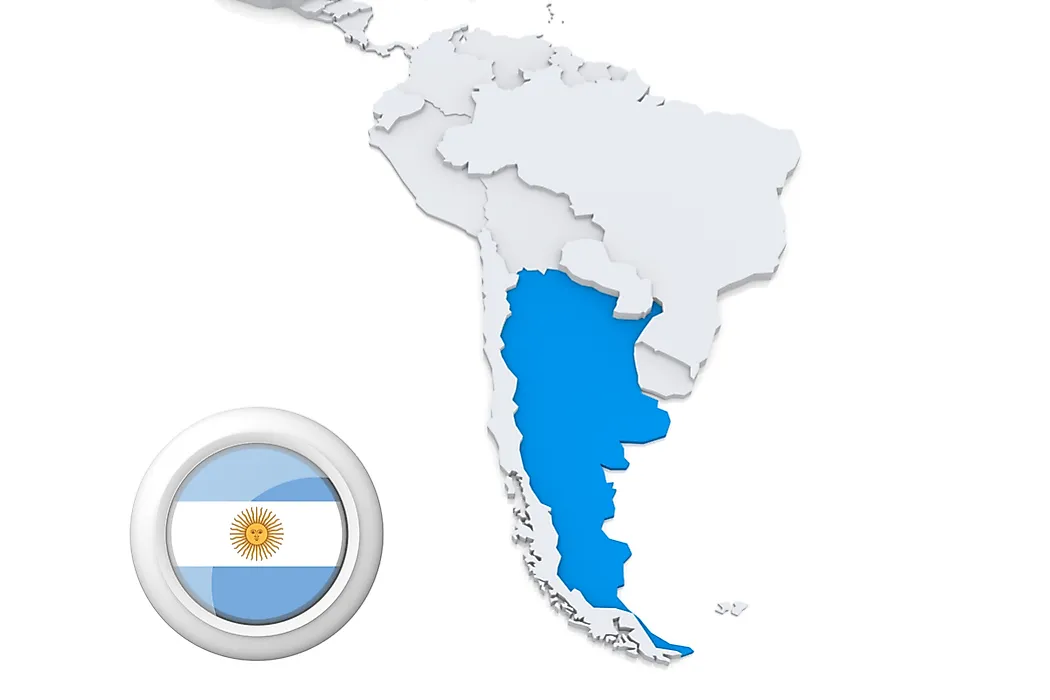What Continent Is Argentina In?

The Argentine Republic is a federal republican state found in the Southern Cone of South America. Its neighbors include Chile, Paraguay, Bolivia, Brazil, Uruguay, the Drake Passage, and the South Atlantic Ocean. Its mainland area of 1,073,500 square miles makes it the eighth largest nation globally. Argentina also claims sovereignty over the South Sandwich Islands, South Georgia, the Falkland Islands, and part of the Antarctica known as the Argentine Antarctica. The federal capital of Argentina is Buenos Aires. As of 2016, the country had approximately 43,847,430 inhabitants. Argentine nationals speak Spanish as their national language.
Geography of Argentina
Argentina has seven geographical regions which define its 23 provinces. The country experiences a variety of climates ranging from polar in the southernmost region to subtropical in the northern part. The most populated areas experience a temperate climate. The highest point in Argentina is Aconcagua with an elevation of 22,831 ft while Laguna Del Carbon which is the lowest point sits at -344 ft below sea level. The country has one of the widest varieties of ecosystems in the world with an Antarctic region, three oceanic zones, and fifteen continental zones. There are approximately 9,372 classified species of vascular plants in Argentina, and about 1,913 cataloged animal species comprising birds, reptiles, amphibians, and mammals.
Administrative Units
The Argentine Republic comprises twenty-three provinces and the capital, Buenos Aires, which is an autonomous city. Each of the provinces is divided into departments and municipalities, apart from Buenos Aires, which constitutes single administrative units called partidos. Partidos are the equivalent of departments in other Argentine provinces. Each province has its constitution which outlines the structure of its local government and directs how financial and natural resources at the provincial level are managed. Some provinces have unicameral parliaments while others have bicameral ones.
The Federal Government of Argentina
The constitution of Argentina is the country’s supreme legal document. It regulates governance in the nation. Buenos Aires is the seat of government. The federal government has three arms, legislative, executive, and judicial. Legislature, officially known as Congress, is bicameral with a lower house called the Chamber of Deputies and an upper house known as Senate. The Senate has 72 members elected as provincial representatives, and they serve for six-year terms. The lower house has 257 deputies who are representatives of the people. Deputies serve four-year terms. The President of Argentina is the head of the executive and the military. The people vote directly for their president every four years. The Supreme Court is the highest judicial institution in the country.
Economy
Argentina is a rich country with many natural resources, highly educated inhabitants, well developed and diversified industries, and a very productive agricultural sector that majors in exports. It is classified as a middle emerging economy, and it is one of the member states of the G-20 forum. The 2017 nominal GDP estimate for the country was $628.935 billion, making Argentina the 21st largest economy in the world. The country has a vast network of industrial parks and manufacturing has a huge impact on the country’s GDP. In 2012, for example, revenues from the sector accounted for 20.3% of the GDP. The agricultural sector produces about 50% of the raw materials for these industries.











